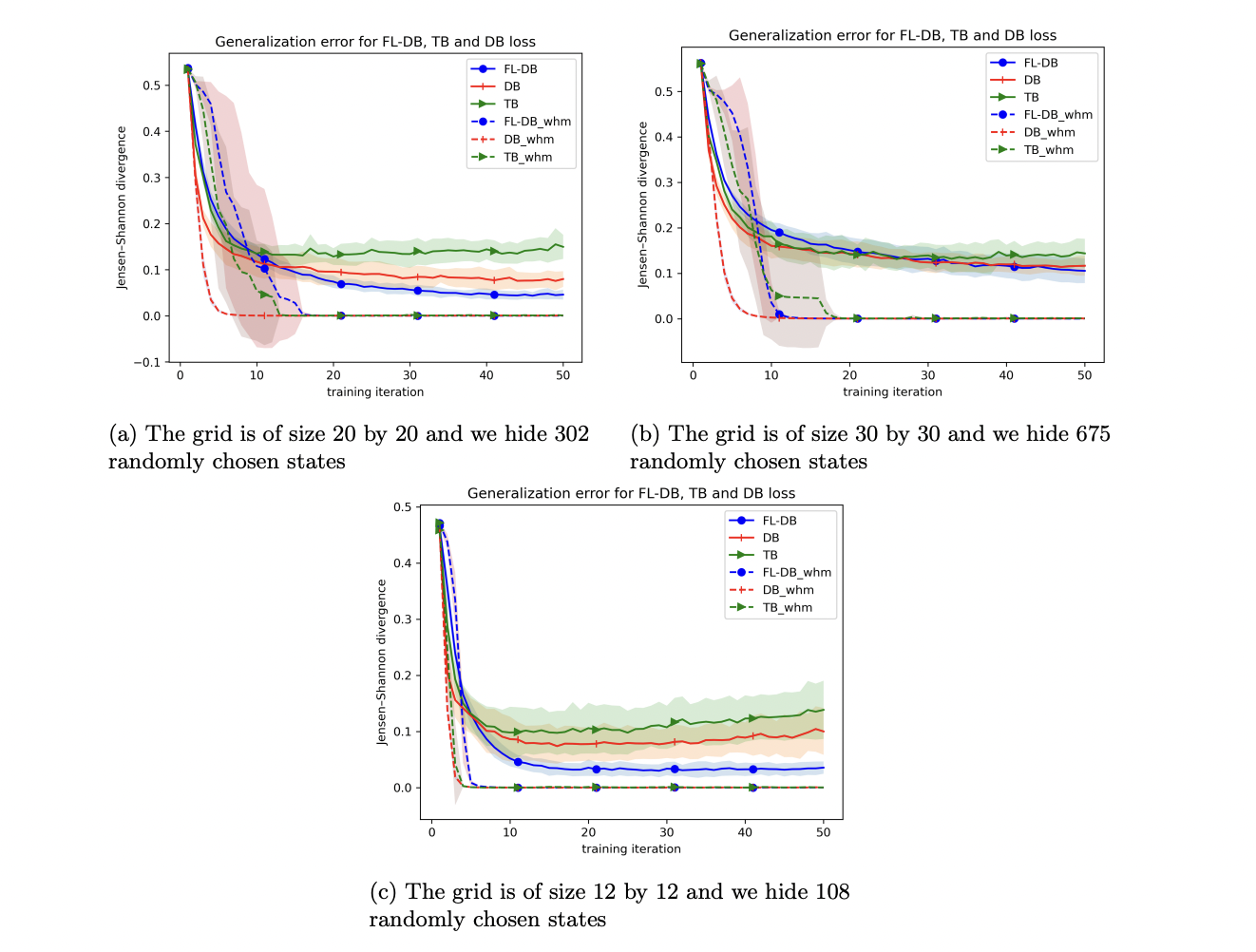

Generative Flow Networks (GFlowNets) address the complex challenge of sampling from unnormalized probability distributions in machine learning. By learning a policy on a constructed graph, GFlowNets facilitates efficient sampling through a series of steps, approximating the target probability distribution. This innovative approach sets GFlowNets apart from traditional methods by providing a robust framework for handling intricate sampling tasks.
A persistent issue in probabilistic modeling is the difficulty of sampling from complex, unnormalized distributions, which often feature multiple modes separated by low-probability regions. Traditional methods like Markov Chain Monte Carlo (MCMC) struggle with these distributions, frequently leading to mode collapse. This phenomenon occurs when the sampling process becomes confined to a single mode, resulting in a lack of diversity in the generated samples and limiting the model’s effectiveness.
Current methods, such as MCMC algorithms, are widely used for sampling from complex distributions. These methods generate random samples by simulating a Markov process over the sample space, eventually converging to the target distribution. However, MCMC has significant limitations, particularly when regions with low probability mass separate the modes of the reward function. The likelihood of moving from one mode to another is exponentially small, causing MCMC samples to become entangled in one mode and reducing the diversity of the generated objects. Furthermore, MCMC techniques for discrete objects with combinatorial constraints are less well-developed than those for continuous counterparts, further limiting their applicability.
Researchers from Mila, Université de Montréal, introduced GFlowNets as a potential solution to overcome these limitations. GFlowNets aims to provide a robust framework for sampling from unnormalized distributions by learning a policy that approximates the target distribution. The research team focused on formalizing generalization in GFlowNets and designing experiments to test their ability to uncover unseen parts of the reward function. This approach leverages the strengths of GFlowNets in capturing intricate patterns within the reward function and effectively generalizing them to novel, unseen parts.
GFlowNets operates by constructing a policy that models sequences of actions leading to terminal states in a directed acyclic graph. The generative process involves sampling from this policy to generate new samples from the target distribution. The researchers proposed the Trajectory Balance loss as a method for training GFlowNets. This loss function provides a necessary and sufficient condition for the learned policy to approximate the target distribution accurately, enabling tractable optimization without defining flow estimates. The Trajectory Balance loss involves learning a forward transition policy and a backward probability transition function, facilitating efficient sampling.
The performance and results of the GFlowNets were evaluated through a series of experiments designed to test their generalization capabilities. The results demonstrated that GFlowNets trained with the Detailed Balance loss outperformed those trained with other objectives, showcasing their robustness and effectiveness. Specifically, policies derived from the Detailed Balance loss showed a superior capacity for generalization, successfully reconstructing the hidden parts of the reward function. For instance, in one of the experiments, the policies were able to generalize to states that required longer trajectories than those seen during training, highlighting their robustness and effectiveness.
The experiments revealed quantitative results that underscore the advantages of GFlowNets. One noteworthy observation was the superior performance of policies trained with the Detailed Balance loss compared to those trained with the Trajectory Balance loss. The Jensen-Shannon divergence, used to measure the dissimilarity between the learned and target distributions, indicated lower values for the Detailed Balance policies, signifying better generalization. This finding suggests that the choice of training objective plays a crucial role in the model’s ability to generalize effectively.
In conclusion, the research addresses the significant challenge of sampling from complex, unnormalized distributions by introducing GFlowNets. The proposed method demonstrates strong generalization capabilities and offers a promising alternative to traditional sampling methods like MCMC. The findings suggest that GFlowNets, particularly those trained with the Detailed Balance loss, could lead to more robust and diverse sampling techniques in probabilistic modeling. This advancement represents a significant contribution from the Mila, Université de Montréal research team, highlighting the potential for GFlowNets to revolutionize sampling methodologies in machine learning.
Check out the Paper. All credit for this research goes to the researchers of this project. Also, don’t forget to follow us on Twitter.
Join our Telegram Channel and LinkedIn Group.
If you like our work, you will love our newsletter..
Don’t Forget to join our 46k+ ML SubReddit
The post This Machine Learning Research Attempts to Formalize Generalization in the Context of GFlowNets and to Link Generalization with Stability appeared first on MarkTechPost.